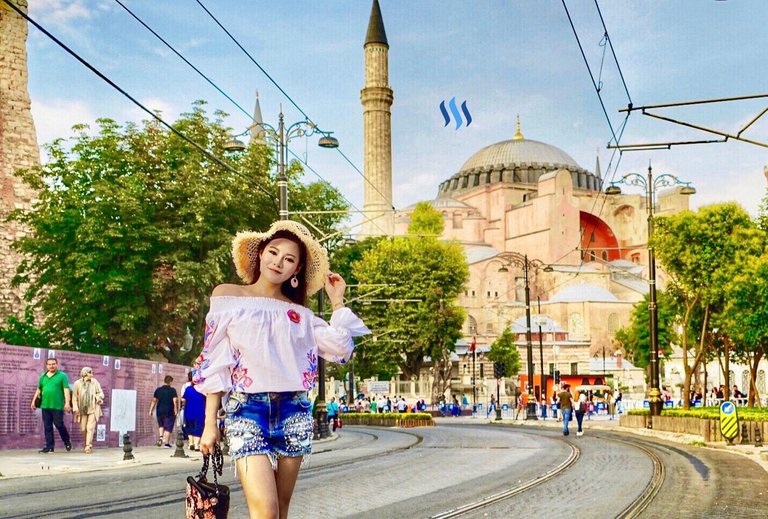
Dear hive Friends:
Welcome to another blog post of mine! I can't wait to connect with all of you and hope you really enjoy what I have in store for you today. You'll not believe just how amazing the landmark is that we are going to explore together. Located in Istanbul in Turkey, this iconic building has to be seen to be believed. I really hope that my photography can help you experience this beautiful landmark the same way that I did.
What is this amazing place called? Hagia Sophia. Stay right to the end to see it as you've never experienced it before!
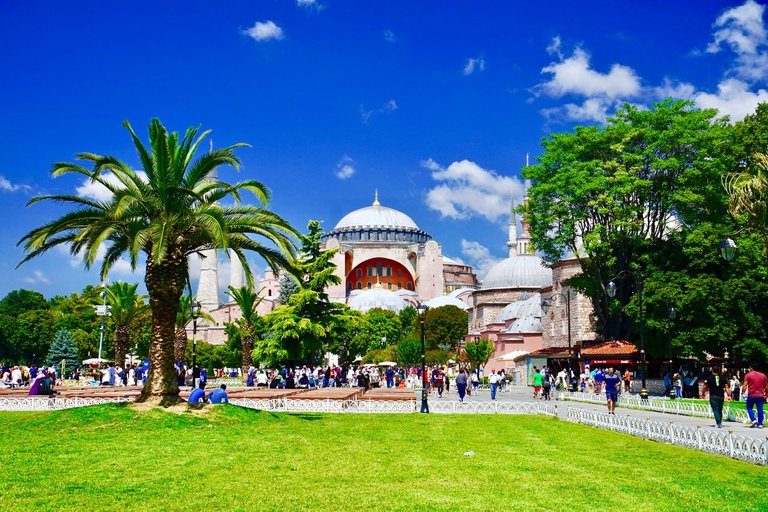
Right next to the Blue Mosque that we saw in my last post, the imposing Hagia Sophia has a long, rich and colourful history. 'Hagia Sophia' is derived from the Greek for Holy Wisdom, which reflects its roots as a Greek Orthodox Christian cathedral. First built in 537 AD, it was the largest building in the world at the time.
You can see has a very distinct dome shape, which was particularly unique at the time. Though we now see this dome shape often in Islamic architecture, this building style wasn't always as common. When first built, Hagia Sofia would have been truly unique. The dome shape only became widely synonymous with Muslim architecture during the Ottoman empire, when the Sultans realised that a unified religious architecture would help unify the empire. They chose the dome shape to be one of their iconic structural shapes and they are now founds all over the world where Muslims worship.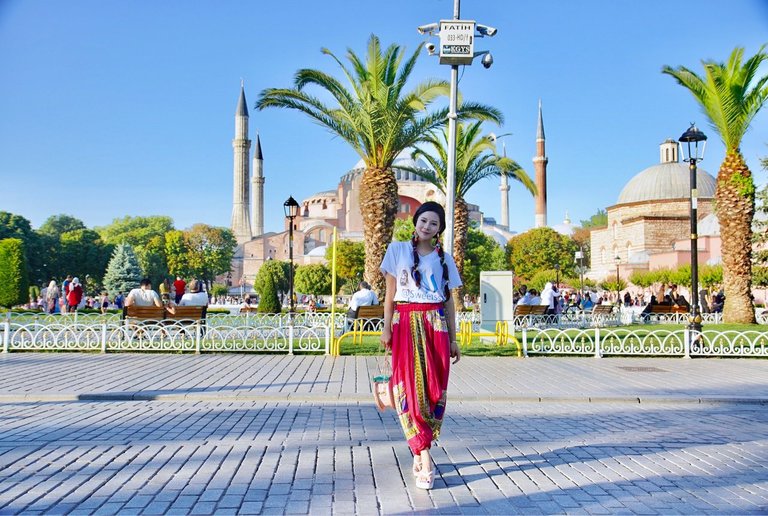
For 900 years Hagia Sophia was an orthodox cathedral and served as an important place of worship and religious governance until 1453 when it then became a mosque under the Ottoman empire. Amazingly, it is even larger than the Blue Mosque even though the mosque was built 1000 years later. It truly is a wonder of design and architecture for a building so old. It inspires and dominates the skyline even now, so in 537 AD it must have left those who visited it in complete awe.
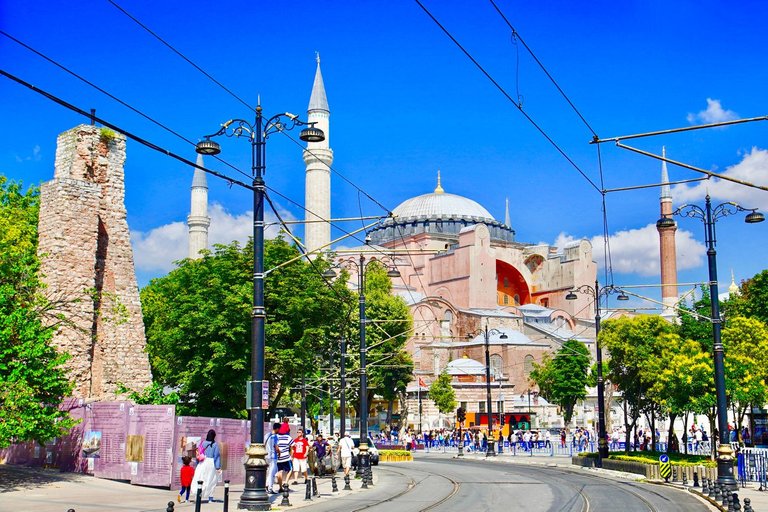
Hagia Sophia is mostly built from small bricks and mortal, which makes it look to me a bit more rustic than buildings cut from large stone blocks. A bit like someone started off wanting to build a house and then just forgot to stop building! It only took five years to build, and replaced another church on the same site. That church was constructed mostly of wood, and thus it burned down to the ground in 532 AD. Emperor Justinian the 1st immediately commissioned the construction of a new church on the site, which was to become Hafia Sophia as we know it today.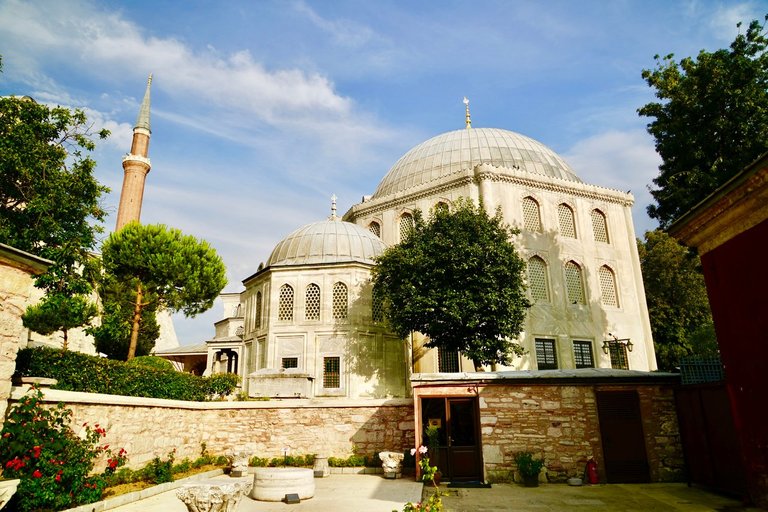
An amazing feat of engineering, historical records tell us that construction took over 10,000 workers to build. Unfortunately, only 35 years later the dome suffered damage after a major earthquake, and collapsed in 558. Historians believe the collapse was blamed on the dome being too 'flat'. The emperor commissioned an architect named Isidorus to fix the roof. He used lighter materials and increased the arch of the roof to create a stronger shape. This dome has now stood since 560 AD!
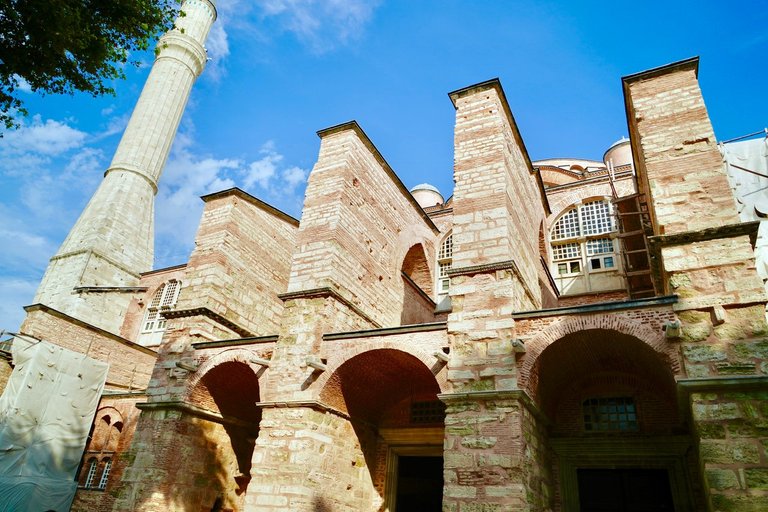
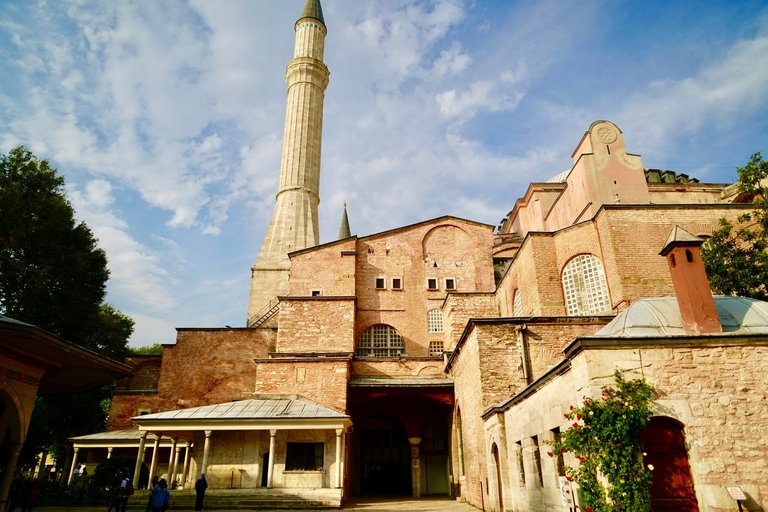
Hagia Sophia's 82m length and 73m width isn't just comprised of the main dome. There are also additional structures and buildings that make up the entire area. I found walking around the building, not just seeing the standard front view, to be fascinating.
Venturing inside the majestic domes of Hagia Sophia
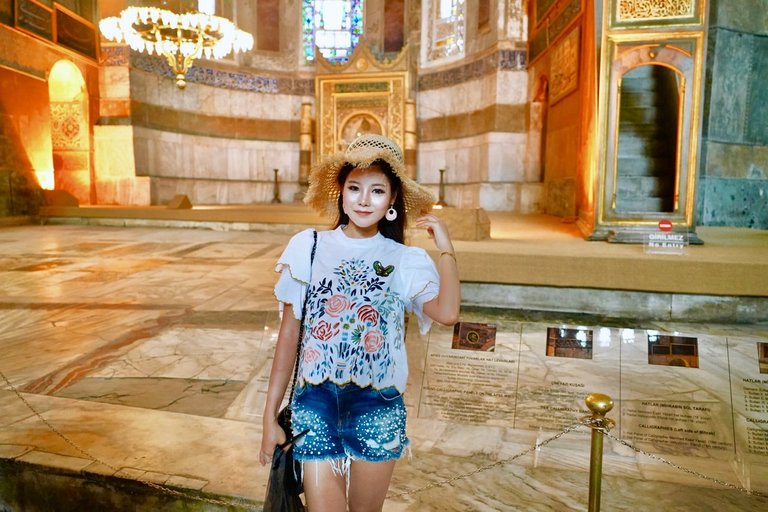
Venturing inside, I was as impressed with the beautiful interior as much as the exterior. The building is no longer a centre for religious activities as it has been for thousands of years - it is now a museum. This means that elements from both Christian and Muslim history have been preserved within, making it a fascinating place to explore.
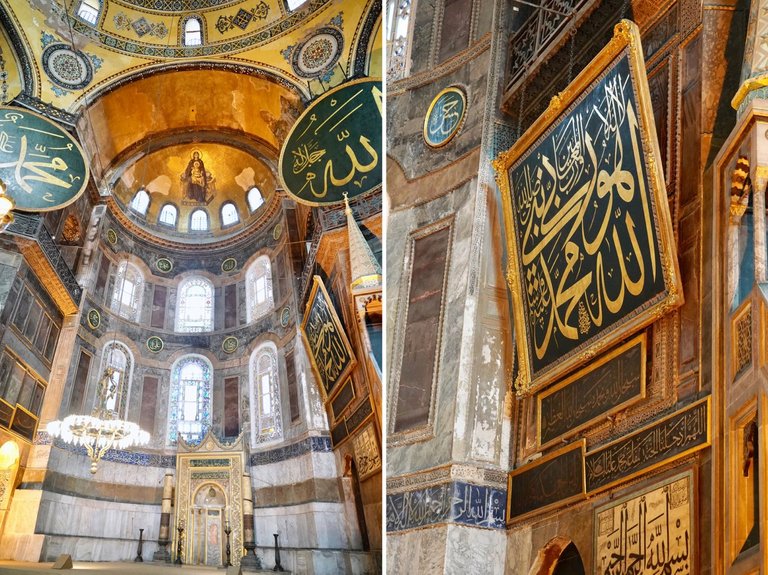
I knew that Hagia Sofia was famous for its great columns and mosaics, but I don't think anything can prepare you for the scale and complexity of them. The vaulted dome ceilings, with the soaring columns, look more like the inside of a cathedral. However, that symbolism is then mixed in with many different elements from the Islamic history of the building. It makes for a truly unique mix of different designs found together in very few places in the world.
The gold on the mosaic in the vaulted dome above makes the ceiling seem to almost glow, shining a beautiful golden light down onto those of us standing below.

From the outside, the central dome dominates your focus. Inside, however, you realise that there are in fact multiple domes that interconnect. Each one is decorated different to the other, with gold colours and religious imagery being the most common colours and motifs. Holding up the massive ceiling are the beautifully stacked, carved and decorated columns. Standing under the 55m central dome, admiring the immensity of Hagia Sophia, I did feel very small and humbled.
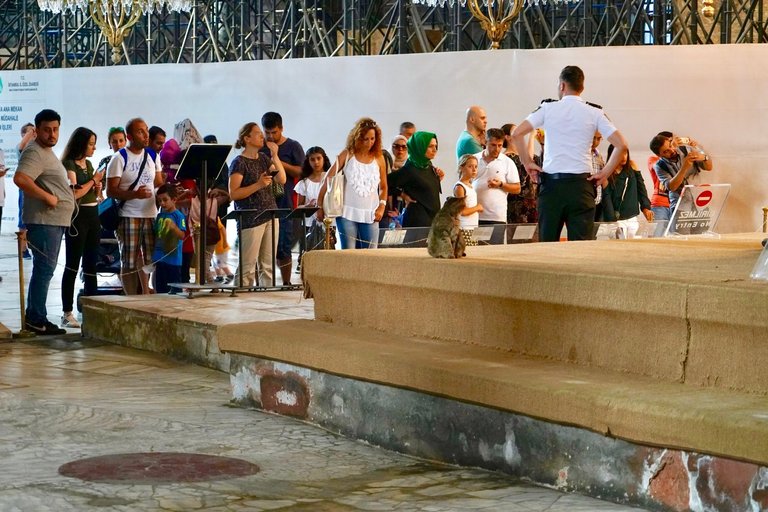
Stop! Look very carefully. I wasn't just taking photos of a bunch of random people... I found a fury friend, in the last place I'd have expected! Up at the front of the giant ex cathedral I noticed the cutest little cat. He looked like he had positioned himself in front of the crowd, ready to give a speech! Perhaps he is the caretaker of the building and wanted to address the gathered crowd about the proper conduct while visiting.
He looked completely un-concerned by his upcoming public address, but I thought I was worried he might run off if I approached him too quickly. I did hang back for a bit, my eyes drawn between wanting to admire the majestic domes and columns further, and wanting to go and meet The Caretaker. I decided that the building had already been standing for well over 1000 years, so it would probably still be there in a few minutes after I'd gone and made a new friend.
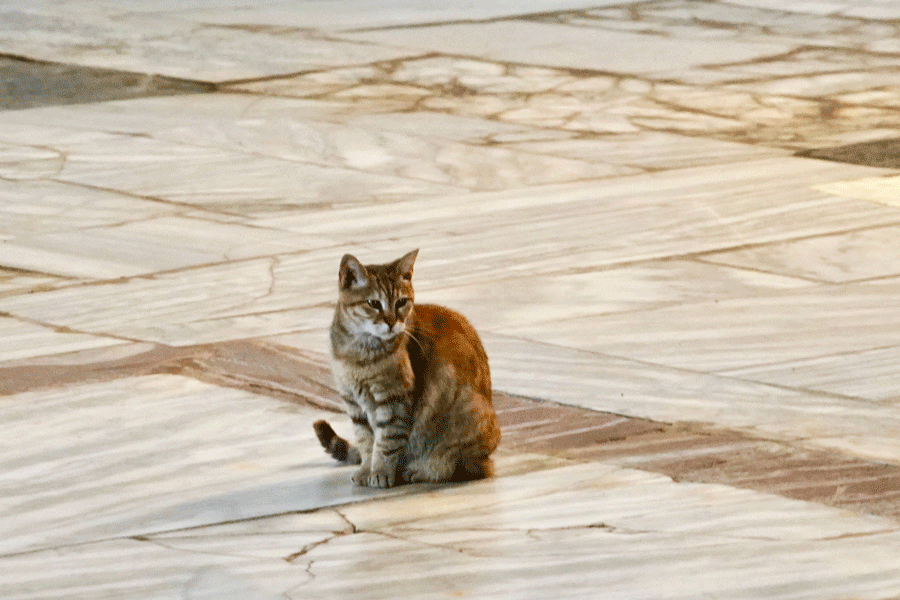
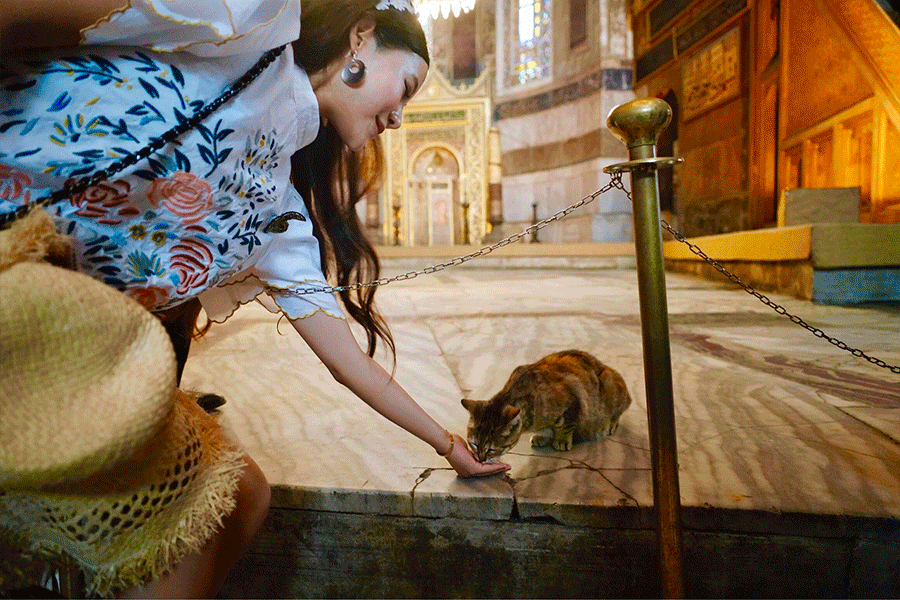
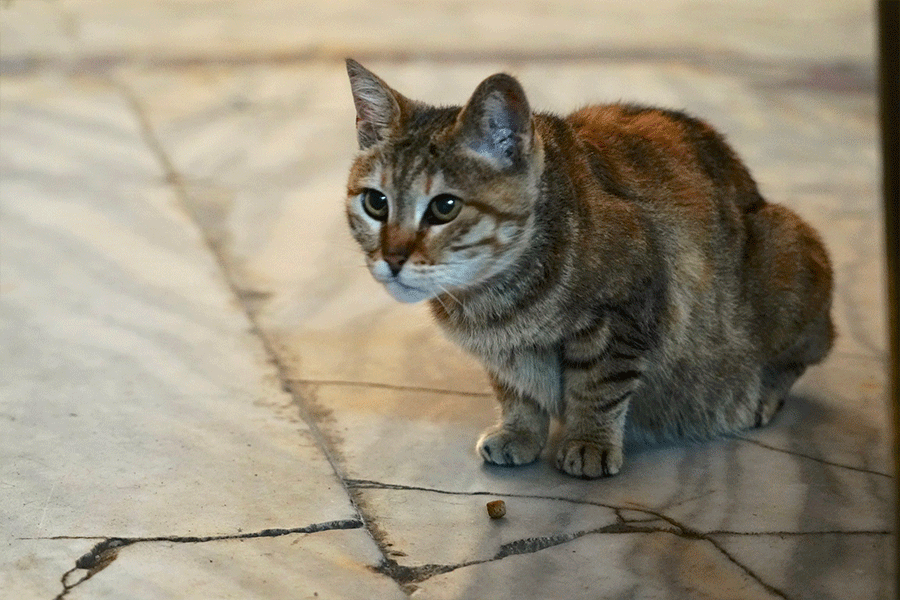
I loved making a new little furry friend. He must get looked after very well by tourists. As much as I joke about him being The Caretaker, I did wonder if he was a stray that just wanders into the building through some secret entrance each day, or if he belongs to the museum. He seemed completely un-phased by all of the people around him, though he was quite timid when coming to get food. Because of that I suspected that he was a stray, because he had 'street' instincts, but must have visited regularly. What a beautiful little man! So good to meet him. I knew he'd be supervising all of the tourists in Hagia Sophia and making sure we all enjoyed ourselves.
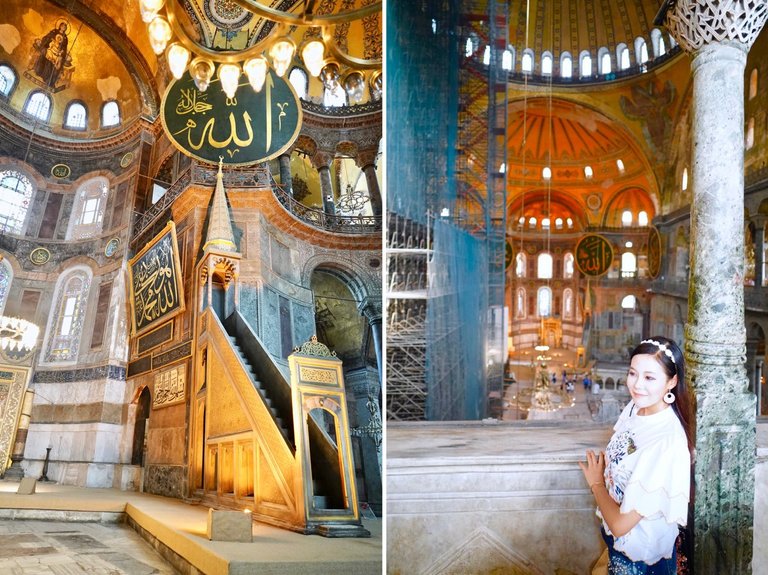
As you can see from the photo here, there was some pretty extensive restoration work going on during my visit. In such an old building it is essential that the structure is kept strong and safe for all of the visitors, and the preservation of such a landmark. This is especially important since the the history of Hagia Sophia is marked by regular earthquakes and earthquake damage. The building is a UNESCO world heritage site and has seen extensive renovations since receiving the prestigious status in 1993.
On top of that, there's the priceless art that adorns every surface of the building's walls and ceilings. Everything from the sun to damp to tourists can cause damage to these pieces of work. They could never be replaced so they must be restored. The museum does a great and unending job of maintaining the splendour of the building.